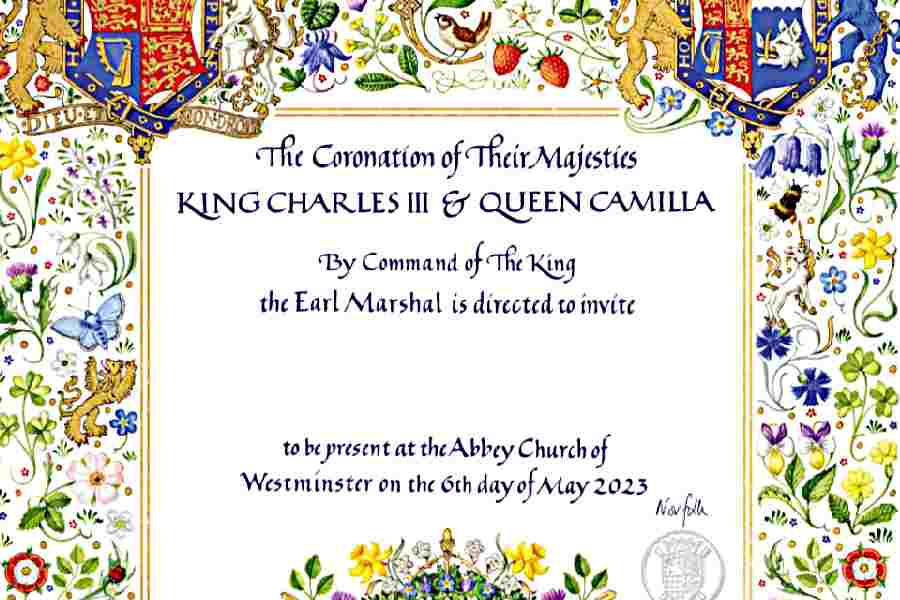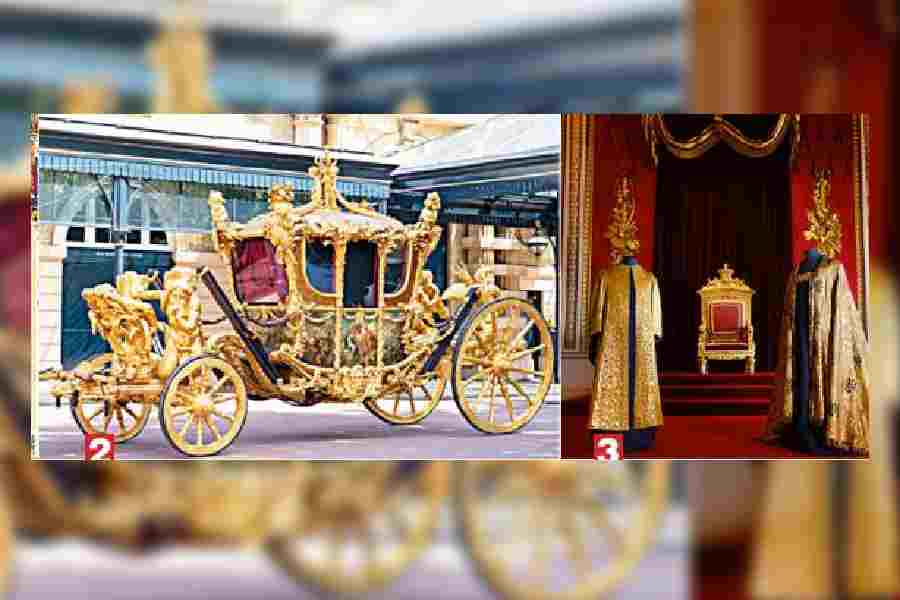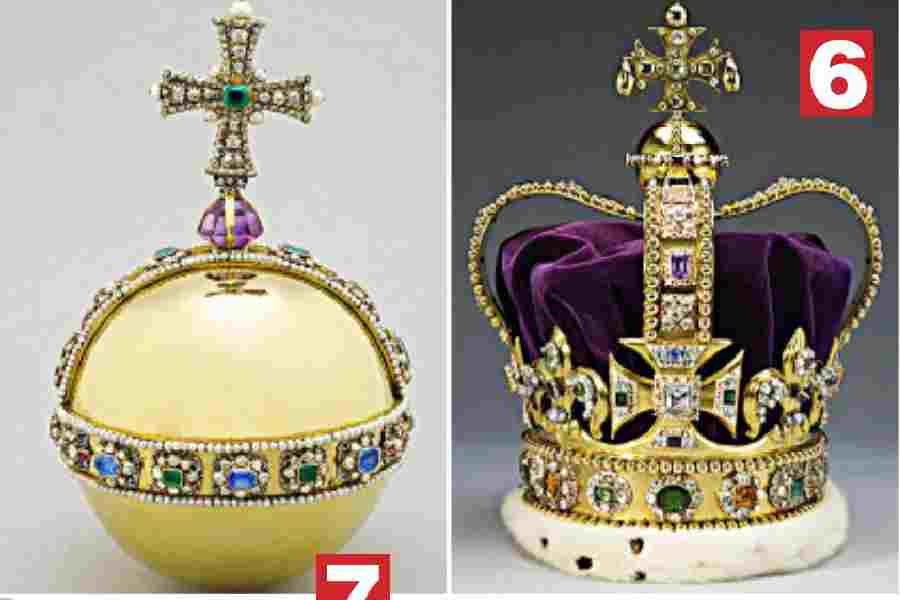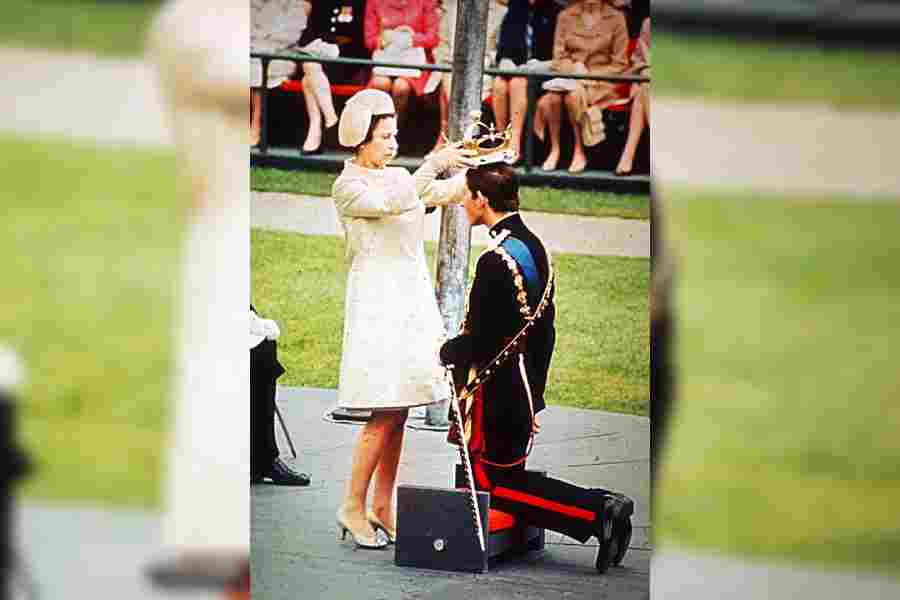1. The Coronation Invitation Card: The original artwork for King Charles III’s coronation invitation card is hand-painted in watercolour and gouache and the design is reproduced and printed on recycled card with gold foil detailing. The central design of the Green Man motif is an ancient figure in British folklore and symbolises spring and rebirth, to celebrate the new reign. The invitation card consists of other design motifs like the leaves of oak, ivy and hawthorn, which are emblematic flowers of the UK. Flowers appearing in the groups of three on the card signifies the King became the third monarch of his name. The lion, a unicorn and a boar are taken from the coats of arms of the monarch and Camilla Shand’s father Major Bruce Shand.


2. The Coronation Procession: Any royal ceremony is incomplete without gold coaches and a procession. Today morning, their majesties will travel from Buckingham Palace in the King’s procession to Westminster Abbey in the Diamond Jubilee State Coach. The gilded crown on top of the Diamond Jubilee State Coach was carved from oak and the coach’s interiors are inlaid with sample woods, metals and other materials from buildings and places with specific connections with British history. This coach has been used at every coronation since that of William IV in 1831. Due to its weight of four tonnes, the royal coach will be travelling at a walking pace. On returning to Buckingham Palace after the coronation service, their majesties will receive a Royal Salute followed by three cheers from the United Kingdom and Commonwealth Armed Forces, who will be parading.
3. The Coronation Vestments: King Charles will don prehistoric items of clothing from the royal collection, which was worn by previous monarchs at past coronations. The ‘vestments’ include Supertunica (a robe worn by a British monarch at their coronation; left), Imperial Mantle (a cloth of gold woven in coloured threads; right), Colobium Sindonis (a white linen tunic), Coronation Sword Belt and Coronation Glove worn by King Charles’s grandfather King George VI, in the interests of sustainability and efficiency.

4. The Anointing Oil: The anointing ceremony is the most sacred ritual during the coronation where it is believed that the monarch has been appointed directly by God and emphasises the spiritual status of the sovereign. The Chrism oil or the anointing oil which will be used to anoint the new monarch has been consecrated in Jerusalem this March. The oil has been created using olives harvested from two groves from the Mount of Olives, at the Monastery of Mary Magdelene and the Monastery of Ascension. The Monastery of Mary Magdelene is the burial place of Charles’s grandmother, Princess Alice of Greece. The olives were pressed outside Bethlehem and have been perfumed with essential oils like sesame, rose, jasmine, cinnamon, neroli, amber and orange blossom.
5. Ceremonial Chairs at the Coronation: The Chairs of Estate, which will be used during the early parts of the coronation service. These chairs are made from carved and gilded beechwood in the 17th-century style, which was used for earlier Chairs of Estate. The cyphers of Queen Elizabeth II and Prince Philip are featured in the carvings of the giltwood stretcher joining the front legs together with the national emblems of a rose, thistle and shamrock. The new cyphers for the chairs have been hand-embroidered by the Royal School of Needlework, with cloth of gold woven with a metal thread. The cloth of gold is embellished with gold metallic threads. The new silk damask upholstery was completed by the Royal Household’s upholsterers.

6. St Edward’s Crown is the spectacular gold crown with which King Charles will be crowned at the coronation. This crown was made back in 1661 for King Charles II, as a replacement for the medieval crown which had been melted down in 1649. The crown has the original design with four crosses-pattee and four fleursde-lis, and two arches. The crown is topped with an orb and a cross, which symbolises the Christian world. The crown is bejewelled with a solid gold frame set with rubies, amethysts, sapphires, garnet, topazes and tourmalines. The crown has a velvet cap with an ermine band.
7. A representation of the sovereign’s power and symbolising the Christian world, the Sovereign’s Orb was made during the 17th century. The orb is divided into three sections with bands of jewels, for each three continents known in the medieval period.

8 The Sovereign’s Sceptre with the Cross represents the monarch’s temporal power and is associated with good governance. It comprises a gold rod, surmounted by an enamelled heart-shaped structure which holds the Cullinan 1 diamond. The other sceptre that King Charles will hold is the Sovereign’s Sceptre with Dove, which is also known as the ‘Rod of Equity and Mercy’, which represents the King’s spiritual role.
9 The Coronation Spoon and Ampulla in the Coronation Regalia are the most important items. The coronation gold spoon is the only piece of royal goldsmith’s work to survive from the 12th century. The gold Ampulla or flask contains the holy oil. The head of the eagle is removable with an opening in the beak for pouring the oil into the spoon, which is used to anoint the monarch.
